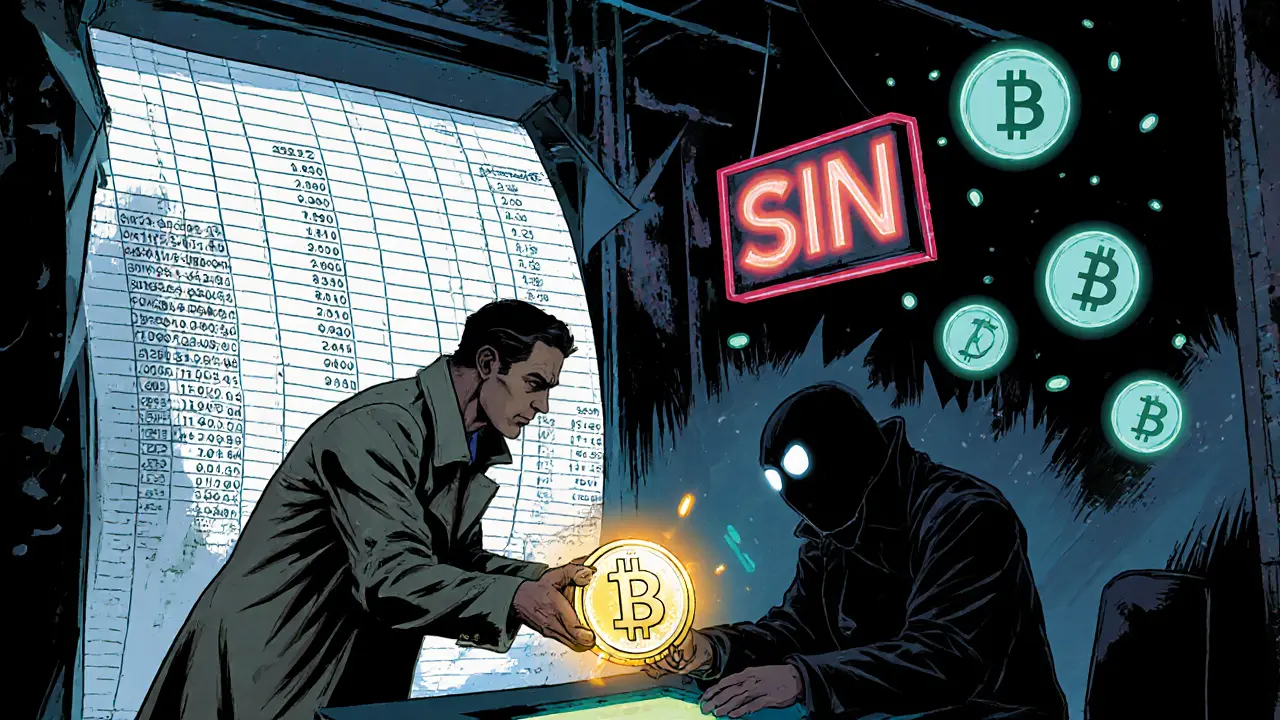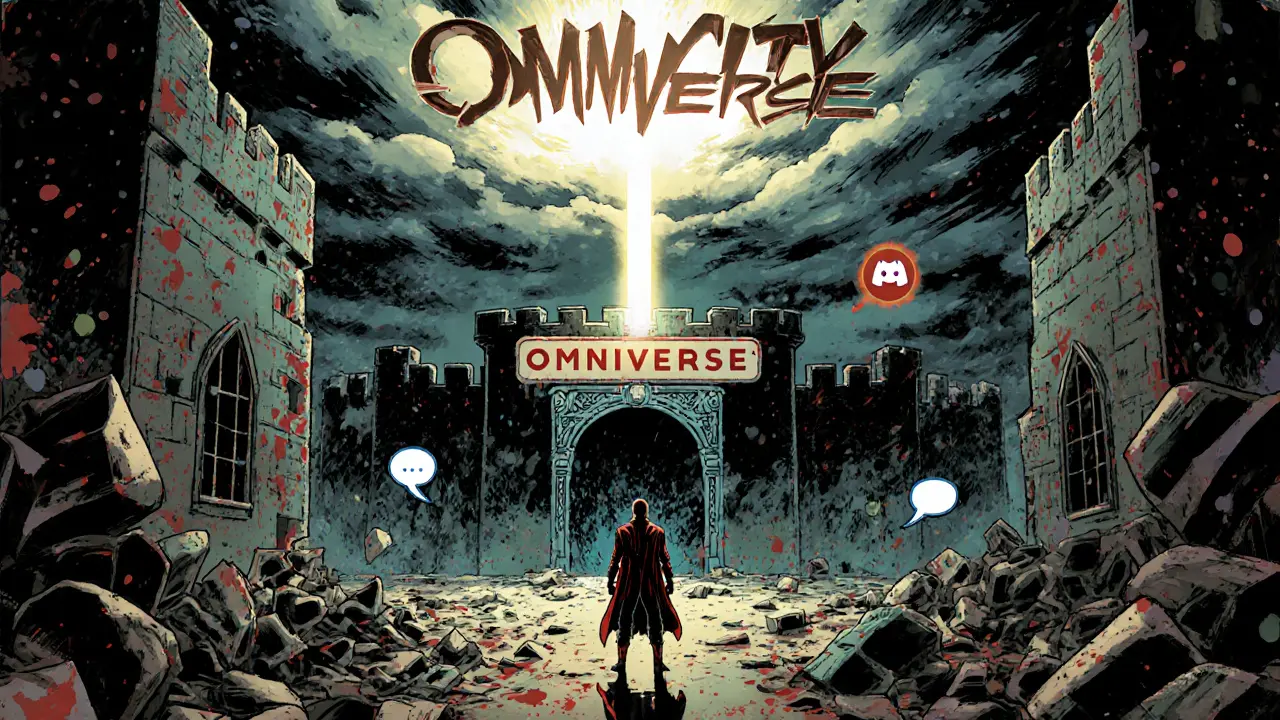SIN Token Value Calculator
Note: This is purely speculative and not guaranteed
Most people hear about Sinverse (SIN) and think it’s just another crypto coin with a flashy name. But if you dig deeper, you’ll find it’s tied to something real - a game called Sin City, a blockchain-based metaverse where players build empires in virtual underworld districts. This isn’t just speculation. It’s a working, if still small, ecosystem built on real blockchain tech, NFTs, and player-driven economies. So what exactly is Sinverse (SIN), and is it worth paying attention to?
What Sinverse (SIN) actually does
Sinverse (SIN) isn’t a currency you use to buy coffee or pay for streaming. It’s the engine inside Sin City, a multiplayer metaverse game where you can own digital land in fake versions of notorious neighborhoods - think Las Vegas’ Neon Strip, Tokyo’s Kabukicho, or Mexico City’s Tepito. These aren’t just pretty 3D models. They’re NFTs, meaning you truly own them on the blockchain. You can build casinos, underground clubs, or smuggling routes on your land. Then you compete with other players to become the top ‘Kingpin’ - not by grinding quests, but by social manipulation, alliances, and in-game schemes that earn you rewards. The SIN token is how all of this works. You need it to buy land, upgrade properties, trade items, and convert in-game currency into something you can cash out. There’s also a second token inside the game called ‘Gold SIN Coins’ - earned through gameplay - that can be exchanged for real SIN tokens. That’s the core loop: play → earn → convert → trade.How Sinverse works under the hood
Sinverse runs on blockchain technology, which means every transaction - whether you’re buying a virtual bar or selling a stolen car NFT - is recorded permanently and can’t be erased. That’s what gives players real ownership. Unlike regular games where your items disappear when the server shuts down, Sin City’s assets live on the blockchain. Even if the company vanishes, your NFTs still exist. It also uses cross-chain tech, meaning SIN tokens can move between different blockchains. That’s rare for small projects. Most crypto games are locked to one chain, like Ethereum or BSC. Sinverse says it’s built to work across networks, but details are thin. No one’s published the exact smart contract architecture or which chains it connects to. That’s a red flag for serious investors. The total supply of SIN is capped at 1 billion tokens. As of late 2023, about 846 million were already in circulation. That leaves just 154 million left to be released - probably through gameplay rewards or future sales. The market cap hovered around $524,000 USD at that time, with a price of roughly $0.00062 per SIN. That makes it a micro-cap coin - one of the smallest in the entire crypto space.Where you can buy Sinverse (SIN)
You won’t find SIN on Coinbase or Binance. It’s listed on smaller exchanges: KuCoin, Gate.io, MEXC, and Bitget. The main trading pair is SIN/USDT - meaning you trade it against Tether, a stablecoin pegged to the US dollar. Over 90% of all SIN trading happens on this pair. The 24-hour volume was around $162,000 in October 2023, which sounds low, but for a coin this small, it’s actually high activity. That’s because the market cap is tiny - a $100,000 trade can move the price 10% in minutes. That’s both a pro and a con. High volume relative to market cap means you can buy and sell without huge slippage. But it also means the price can swing wildly. One tweet from the team or a big whale dumping coins can send SIN down 30% in an hour.
How Sinverse compares to other metaverse coins
Let’s put Sinverse in context. The biggest players in metaverse crypto are The Sandbox and Decentraland. Both have market caps over $400 million. They’ve got big teams, celebrity partnerships, and thousands of daily players. Sinverse? $524,000 market cap. 22,930 wallet holders. An average of 150 people active on Discord daily. So why does Sinverse even exist? It’s betting on something different: the ‘Omniverse’ concept. Instead of building one big world, Sin City plans to host dozens of smaller NFT games and projects inside its ecosystem. Think of it like a digital mall - one platform, many tenants. If 10 other indie NFT games move in, Sinverse suddenly becomes the gateway for thousands of new users. That’s the dream. But here’s the catch: no other projects have moved in yet. The website says it’s open for partnerships, but there’s zero proof. No announcements. No logos. No demos. That’s a huge gap between promise and reality.Is Sinverse a good investment?
Some price prediction sites claim SIN could hit $0.057 by 2030 - that’s a 90x increase. Others say $7 by 2050. That’s pure fantasy unless Sinverse becomes the next Fortnite. And that’s not happening. Here’s the truth: Sinverse is a high-risk, speculative play. It’s not a stock. It’s not a bond. It’s a bet on a game that doesn’t yet have enough players to sustain itself. The tokenomics are sound on paper - limited supply, in-game utility, conversion mechanics. But the execution is lagging. Users on Reddit and Bitcointalk keep asking: “Where’s the game? Why can’t I convert Gold SIN to SIN yet?” The official website is basic. The Discord is quiet. The Twitter account posts weekly updates, but they’re vague: “New features coming soon.” No roadmap. No timeline. No code commits on GitHub. That’s not how serious projects operate. If you’re looking for a safe crypto play, skip Sinverse. But if you’re willing to gamble on a long shot - and you believe in the ‘Omniverse’ idea - then maybe you’ll buy a small amount. Not because you think it’ll make you rich. But because you want to be part of something that could, just maybe, grow.
What you need to know before getting involved
If you’re thinking about buying SIN, here’s what you must do first:- Set up a crypto wallet - MetaMask or Trust Wallet work fine.
- Buy USDT on a major exchange like Binance or Kraken.
- Transfer it to KuCoin or Gate.io - those are the only places where SIN trades reliably.
- Buy only what you can afford to lose. Start with $10, not $1,000.
- Join the Discord and read the last 50 messages. Are people asking the same questions over and over? That’s a warning sign.
- Try to find a video of the game actually running. If you can’t, it’s still just a website with a token.
What’s next for Sinverse?
The team says they’re working on the Gold SIN to SIN conversion system. That’s the biggest missing piece. Without it, the whole economy is theoretical. Players earn in-game currency, but can’t turn it into real value. That kills the incentive to play. They also claim to be adding more districts and NFT types. But again - no screenshots, no beta access, no timeline. The team posts on Twitter, but doesn’t answer questions. That’s not transparency. That’s silence. The metaverse market is projected to hit $1.3 trillion by 2030. But only 15% of blockchain games survive past three years. Sinverse is barely one year old. If they don’t launch a playable, engaging game by mid-2026, the token will likely fade into obscurity. Right now, Sinverse is a gamble. Not a project. Not a product. A bet on a team that might, someday, build something real.What is Sinverse (SIN) crypto used for?
Sinverse (SIN) is the native token of Sin City, a blockchain-based metaverse game. It’s used to buy digital land (NFTs), upgrade properties, trade in-game items, and convert earned in-game currency (Gold SIN Coins) into tradable tokens. Without SIN, you can’t fully participate in the game’s economy.
Where can I buy Sinverse (SIN) coin?
You can buy SIN on smaller crypto exchanges like KuCoin, Gate.io, MEXC, and Bitget. The main trading pair is SIN/USDT. It’s not available on major platforms like Coinbase or Binance. Always double-check the exchange before sending funds.
Is Sinverse a good investment?
Sinverse is a high-risk, speculative asset. It has a tiny market cap, low liquidity, and no proven gameplay yet. While some predict massive future gains, the project lacks transparency, user adoption, and clear development progress. Only invest what you can afford to lose - and treat it like a lottery ticket, not a long-term holding.
Does Sinverse have a working game?
There’s no public demo or playable version of Sin City as of late 2023. The website shows concept art and marketing material, but users report they can’t find actual gameplay footage or access to the game. The core feature - converting in-game Gold SIN to real SIN - also appears unimplemented. Until you can play and earn, it’s just a token on a website.
How many Sinverse tokens are in circulation?
As of October 2023, approximately 845.94 million SIN tokens were in circulation out of a total supply of 1 billion. The remaining 154 million are likely reserved for future rewards, team allocations, or ecosystem growth. The fully diluted valuation (FDV) was around $618,870 USD at the time.
What’s the difference between SIN and Gold SIN Coins?
SIN is the main cryptocurrency token traded on exchanges. Gold SIN Coins are an in-game currency earned by playing Sin City - for example, by completing missions or winning rivalries. The project claims Gold SIN can be converted into real SIN tokens, but this feature has not been fully launched or verified by users as of late 2023.
Why is Sinverse so cheap?
Sinverse is cheap because it’s a micro-cap token with minimal user adoption, low trading volume compared to competitors, and no proven product. It’s priced low because the market doesn’t believe it has real traction yet. A low price doesn’t mean it’s a bargain - it usually means high risk.
Can I use Sinverse outside the game?
Right now, Sinverse has no utility outside of the Sin City ecosystem. You can’t use it to pay for services, buy NFTs from other projects, or trade on most DeFi platforms. Its only value comes from its role inside the game - which, as of now, isn’t fully functional. That makes it a closed-loop token with very limited use cases.


Mike Stadelmayer
November 20, 2025 AT 02:14Man, I’ve been watching Sinverse for months now. Not because I think it’s gonna moon, but because the idea of a digital underworld where you can run illegal casinos and smuggle NFTs is just too cool to ignore. The tokenomics make sense on paper - limited supply, in-game utility, conversion loop. The problem? No one’s actually playing the game. I’ve checked the Discord. The last real update was three months ago. If you’re gonna build a metaverse, show us something. A video. A beta. Anything. Right now it’s just a website with a token and a dream.